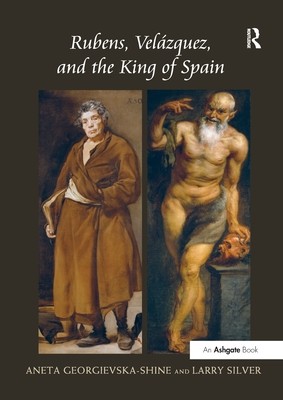
- We will send in 10–14 business days.
- Author: Larry Silver
- Publisher: Routledge
- ISBN-10: 113825164X
- ISBN-13: 9781138251649
- Format: 17.4 x 24.6 x 1.7 cm, minkšti viršeliai
- Language: English
- SAVE -10% with code: EXTRA
Reviews
Description
This study provides a new analysis of the pictorial ensemble of the Torre de la Parada, the hunting lodge of King Philip IV of Spain. Created in the late 1630s by a group of artists led by Peter Paul Rubens, this cycle of mythological imagery and hunting scenes was completed by Diego Velázquez. Despite the lack of a written program, surviving works provide eloquent testimony of several basic themes that embody Neostoic ideals of self-restraint and prudent governance. While Rubens set the moral tone through his serio-comic Ovidian narratives, Velázquez added an important grace note with his portraits of ancient philosophers, and royals and fools of the court. This study is the first to consider in depth their joint artistic contributions and shared ambition. Through analysis of individual works, the authors situate these pictorial inventions within broader intellectual currents in both Spanish Flanders and Spain, especially in the advice literature and drama presented to the Spanish king. Moreover, they point to the lasting resonance of Torre de la Parada for Velázquez, especially within his late masterworks, Las Meninas and Las Hilanderas. Ultimately, this study illuminates the dialogical nature of this ensemble in which Rubens and Velázquez offer a set of complementary views on subjects ranging from the nature of classical gods to the role of art as a mirror of the prince.
EXTRA 10 % discount with code: EXTRA
The promotion ends in 22d.01:51:59
The discount code is valid when purchasing from 10 €. Discounts do not stack.
- Author: Larry Silver
- Publisher: Routledge
- ISBN-10: 113825164X
- ISBN-13: 9781138251649
- Format: 17.4 x 24.6 x 1.7 cm, minkšti viršeliai
- Language: English English
This study provides a new analysis of the pictorial ensemble of the Torre de la Parada, the hunting lodge of King Philip IV of Spain. Created in the late 1630s by a group of artists led by Peter Paul Rubens, this cycle of mythological imagery and hunting scenes was completed by Diego Velázquez. Despite the lack of a written program, surviving works provide eloquent testimony of several basic themes that embody Neostoic ideals of self-restraint and prudent governance. While Rubens set the moral tone through his serio-comic Ovidian narratives, Velázquez added an important grace note with his portraits of ancient philosophers, and royals and fools of the court. This study is the first to consider in depth their joint artistic contributions and shared ambition. Through analysis of individual works, the authors situate these pictorial inventions within broader intellectual currents in both Spanish Flanders and Spain, especially in the advice literature and drama presented to the Spanish king. Moreover, they point to the lasting resonance of Torre de la Parada for Velázquez, especially within his late masterworks, Las Meninas and Las Hilanderas. Ultimately, this study illuminates the dialogical nature of this ensemble in which Rubens and Velázquez offer a set of complementary views on subjects ranging from the nature of classical gods to the role of art as a mirror of the prince.


Reviews